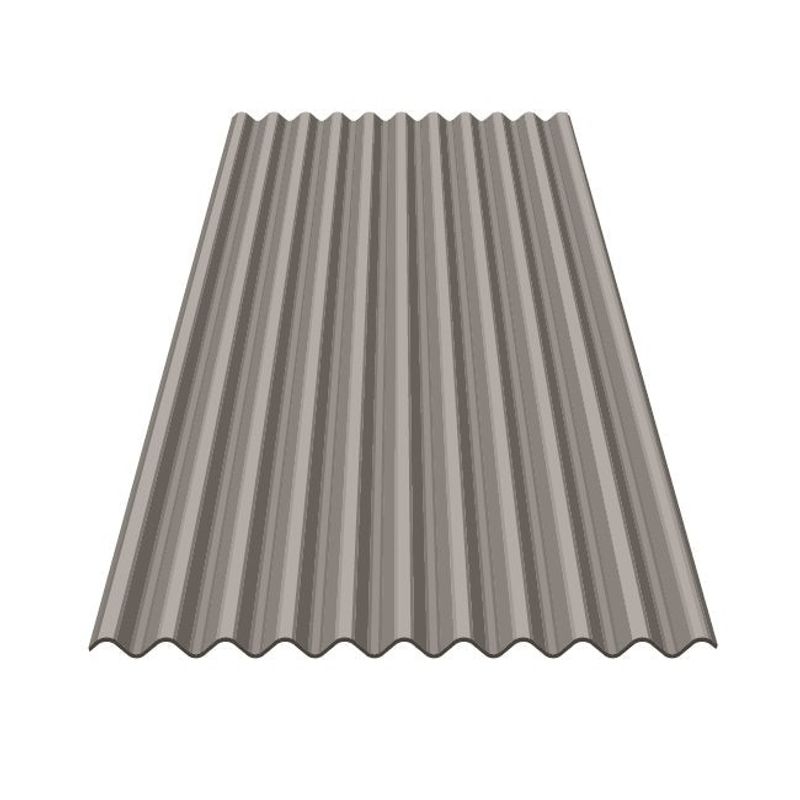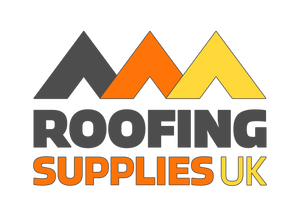As an experienced company that stocks a wide range of sheet roofing materials, we aim to give our customers all the information they need to decide on the sheet roofing option that’s going to be right for their project. Whether you are in the roofing trade, or a DIY enthusiast who wants to have a go at roof replacement or construction, our selection of sheet roofing and related products will provide you with the materials you need to get the job done properly.
We offer a wide range of roofing sheets for sale, as well as insulation, fixings, eave fillers, flashings, sealing strips, batons and more. In addition, we can provide the tools and accessories you need to complete almost any roof sheeting project successfully. Read on to discover the pros and cons of the various sheet roofing materials on offer, as well as information on FAQs and points to consider when selecting a suitable roofing system and material for your project.
The Main Types of Sheet Roofing
Plastic roofing sheets
Included within this category of roofing sheets are: plastic roofing sheets; polycarbonate roofing sheets; PVC roofing sheets; polystyrene; and acrylic roofing sheets. There are a number of advantages to using plastic sheeting, which are summarised in the table below. The key benefits include an excellent strength to weight ratio, a material which is impervious to chemicals and water, the ability to let light penetrate and cost-effectiveness. Points to be aware of include: limited range of permitted uses, some plastics are more durable than others, plastic can look quite “cheap”.
Metal roofing sheets
Commonly seen on factory buildings, warehouses and agricultural buildings, it’s hard to find anything which beats metal for sheer durability. Not only will a metal roof last for literally centuries, metal (such as stainless steel) can be made almost entirely of recycled materials, enhancing the building’s green credentials. Compared with plastic, metal roofing is a better insulator for both heat and sound. This may mean a metal roof requires fewer additional layers to provide suitable cover. For long-lasting roofing sheets, metal is hard to beat.Fibre cement sheets
The traditional choice for agricultural buildings, fibre cement sheets are a common site across the country. Modern fibre cement sheets are made without asbestos, but still offer a durable, low-maintenance roofing solution that’s suitable for a wide range of applications. Resistant to wear and competitively priced, once installed a fibre cement roof will last for decades.Bitumen roofing sheets 3m, 2m and corrugated options
A traditional roofing material, bitumen is well-known as a reliable stand-by for flat roofs. Cheap, waterproof and ideal for low pitch roofs, the main drawback of bitumen roof is that it doesn’t last as long as most of the other roofing materials. Ideal as a short-term solution, the life of a bitumen roof can be extended through regular maintenance and repair as and when required.EPDM (roofing rubber sheets)
Inexpensive and with versions available which are made from recycled materials, a rubber roof is both an economical and potentially green option. Straight-forward to install, the rubber membrane can be quickly and easily stretched over the area to be covered. Whilst it’s not the most durable of materials, it’s certainly good for a few years, often longer in less exposed locations.Compare Types of Roofing Sheet
Material: PVC roofing sheets
Transparency: Lets in high levels of light
Weight: Light-weight
Longevity: Roughly comparable with bitumen, so around twenty-five years
Maintenance: Normally no maintenance required
Reactivity: Inert. Immune to acid rain, biological weathering and UV light.
Ease of installation: Easy to install. Can be worked using standard DIY hand or power tools. Some users complain that the sheets crack easily during fitting, or due to weathering.
Appearance: Transparent roofing material. Some people may feel it looks “cheap”.
Cost: Very economical to install. Roughly the same price as a bitumen roof.
Material: Polycarbonate roofing sheets
Transparency: Virtually completely transparent
Weight: Light-weight
Longevity: A good quality roof will last around 25 years. Cheaper options are obviously less likely to last so long.
Maintenance: No maintenance usually required once in situ.
Reactivity: Inert and resistant to corrosion
Ease of installation: Can be worked using standard tools: for ease, we offer a pre-cut polycarbonate sheeting option.
Appearance: Thicker options may be translucent rather than transparent.
Cost: Depends on the thickness and type – thinner, single layer sheets are comparable with PVC; double walled or thicker sheets are more expensive.

Material: Fibre cement.
Transparency: Opaque.
Weight: Lighter than concrete, this is a relatively heavy option, so strong underlying support is required.
Longevity: Lasts well. A fibre cement roof will often last 50-60 years.
Maintenance: Ideally a fibre cement roof should be repainted every ten years or so.
Reactivity: Fibre cement sheeting is extremely tough, but can become weathered over time, particularly if in an exposed location.
Ease of installation: Installation can be tricky. The sheets generate a considerable amount of dust when cut and require specialist shears.
Appearance: Traditional appearance – commonly seen on agricultural buildings.
Cost: More expensive than plastic options and bitumen, but less expensive than metal. In most cases, longevity is the factor which has the biggest influence on price.

Material: Bitumen roofing.
Transparency: Opaque.
Weight: A bitumen sheet weighs around 5kg. In comparison, fibre cement weighs somewhere around 11kg/m2
Longevity: Lasts somewhere between twenty and thirty years.
Maintenance: May need to be patched.
Reactivity: Depending on the type of bitumen roofing used, on-going inspection and repair may be needed.
Ease of installation: Different modern bitumen systems have different installation methods. These include: torching; set in asphalt; self-adhering systems; cold setting. Specialist installation is recommended for heat-treated options.
Appearance: Popular choice for flat roofs. One of the older, more traditional choices.
Cost: The cost of a bitumen roof is similar to that of a plastic roof.
Material: Metal roofing sheets.
Transparency: Opaque.
Weight: Generally depends on the type of metal used. Aluminium roofs are comparable with a heavier gauge plastic. In comparison, a steel roof is significantly heavier.
Longevity: Often a century or more.
Maintenance: Usually needs to be re-coated periodically to protect it from the elements.
Reactivity: The metals popularly used on roofs are usually fairly inert. Zinc galvanisation is often used to enhance durability.
Ease of installation: Generally requires specialist installation and specific tools.
Appearance: A wide number of different finishes can be applied, enabling it to work well on a range of different projects.
Cost: A metal roof is normally a costly option, but will usually out-last other roofing sheet materials by a significant margin, provided it is cared for properly.
Material: EPDM (rubber roofing).
Transparency: Opaque
Weight: Estimates suggest that, along with fittings, EPDM roofing weighs around 10kg/m2
Longevity: Around 25-30 years, with some modern products lasting as long as fifty years
Maintenance: May need to be patched as time goes on.
Reactivity: Aside from cleaning, additional maintenance isn’t usually required
Ease of installation: If installed as a single sheet, the fitting process is fairly straight-forward.
Appearance: Usually available in black. White EPDM is also created for locations where heat reflection away from the roof is required.
Cost: Price depends on the quality. On average an EPDM roof costs about the same as a bitumen roof. Price varies depending on quality.
Have you considered insulation?
Although some roofing sheets come with integral insulation, or are double-walled, some may require additional insulation. Roofing sheets with insulation may cost more to purchase initially, but can make a significant difference to energy bills, as well as add to the comfort of animals or people spending time beneath the roof. When it comes to roofing sheets, insulation can take several different forms. The right choice usually depends on the type of roof, use of the space below and chosen primary roofing material. Our roofing sheets for sale include insulated options. In addition, we can advise on suitable insulation options to complement your roofing sheet choice.
If you’re looking for roofing sheets near me, remember that we offer fast UK-wide delivery on all our roofing products.
Sheet roofing FAQs
What’s the difference between box profile sheeting and corrugated sheeting?If you’re looking to buy box profile sheeting near me, chances are that your supplier will also offer corrugated roof sheeting as an alternative. Both types of sheeting will have been moulded or shaped into a specific pattern: box profile sheeting is a series of straight-edged crenelations; in comparison, corrugated sheeting is shaped in a series of wave-shaped curves. Corrugated sheeting is the more traditional of the two. Box profile sheeting is the stronger of the two and is also considered to be easier to fix to the purlins (horizontal roof beams).
Why is sheet roofing corrugated?
There are two main reasons why many sheet roofing products are corrugated: the first is that a corrugated sheet is far stronger and more durable than a smooth, flat sheet; the second reason is that water run-off is facilitated by the corrugated shape. Efficient run-off is essential to prevent pooling, which can place an unacceptable additional load on the roof, increasing the likelihood of leaks.
How wide are your roofing sheets?
Roofing sheets come in a range of different widths, depending on the product. The dimensions for each option are given in the product description on our pages. If you have a roof that’s an unusual shape, or can’t find a product with the right dimensions for your project, we offer a cut-to-size option on our polycarbonate roofing sheets which may be of interest.
What is the minimum pitch for a corrugated roof?
Opinions vary regarding the minimum pitch, with around 5 degrees widely considered to be the minimum acceptable pitch.
Do I need flashings for a sheet roof?
Flashings are simply pieces of material which are installed over junctions or around installations in order to help prevent the passage of water through the roof. They are an essential part of any roofing project. Sheet roofing flashings need not be made of lead, but do need to be durable and weatherproof, as well as being the right shape to provide a waterproof seal.
Which roofing sheets are best?
Ultimately the best choice of roofing sheet for a particular project depends on variables which include: sturdiness of the supporting roof framework; purpose of the building; size and dimensions of the building; building location (exposed or sheltered, by the coast or inland, for example); building shape; roof pitch; proposed method of installation (professional or DIY); longevity required; level of maintenance envisaged; the importance or otherwise of aesthetic appeal; budget. The sheeting which may be right for one project may not be best for another. As experienced providers of various types of sheet roofing, we are able to provide advice and product recommendations if required. Our aim is always to ensure you get the best outcomes for your money.
Does a leaking roof have to be replaced?
Although in some cases the roof has to be replaced, in many other instances it can be repaired or refurbished. Most roofing sheets can be patched or replaced, without the need to replace the entire roof. Where a membrane has split or a seam has parted, there are an assortment of adhesives and bonding agents on the market which can be used to effect a repair. We can advise on suitable materials for roofing repairs, depending on the type of roof you have and the cause of the leak.


